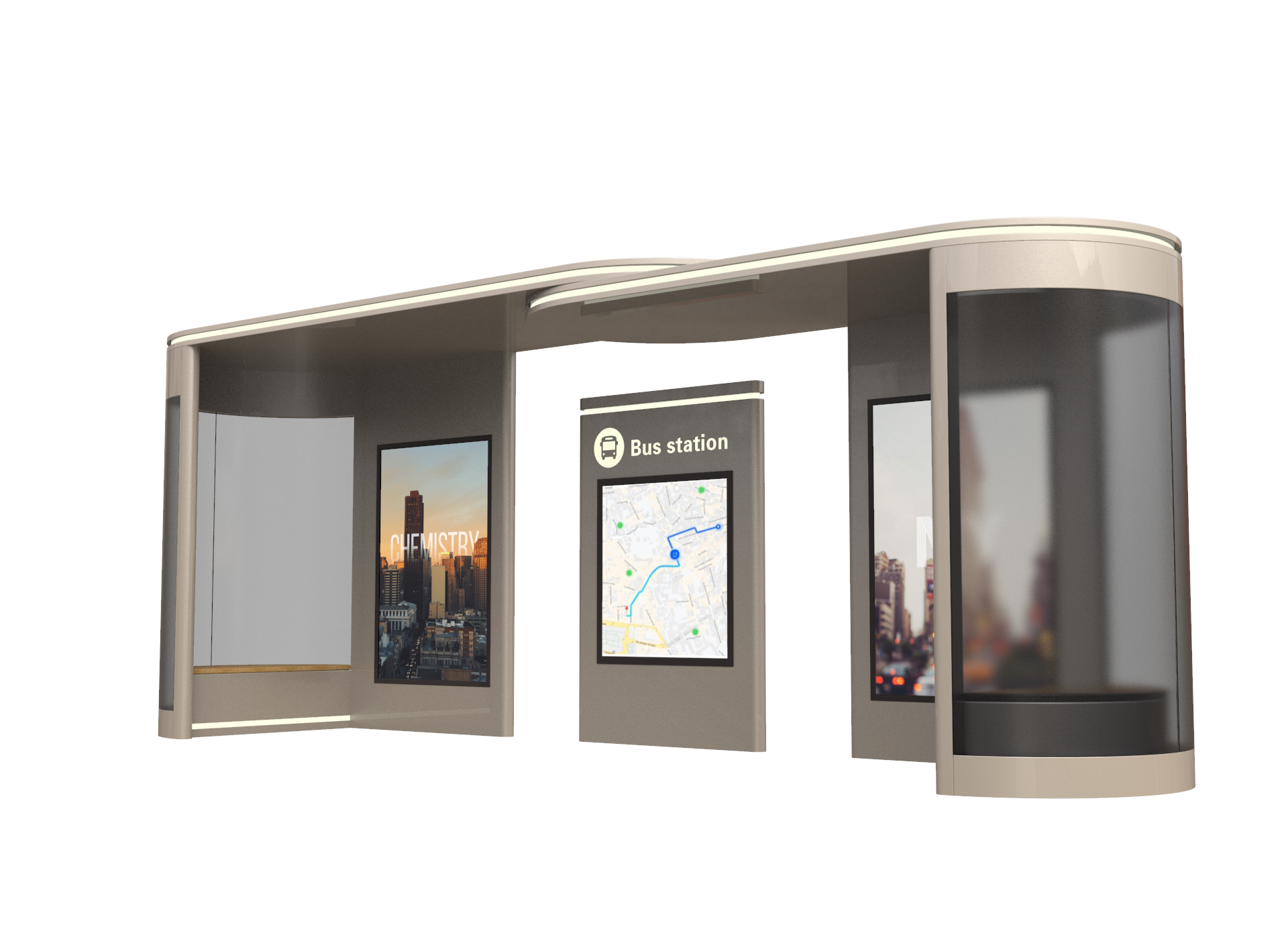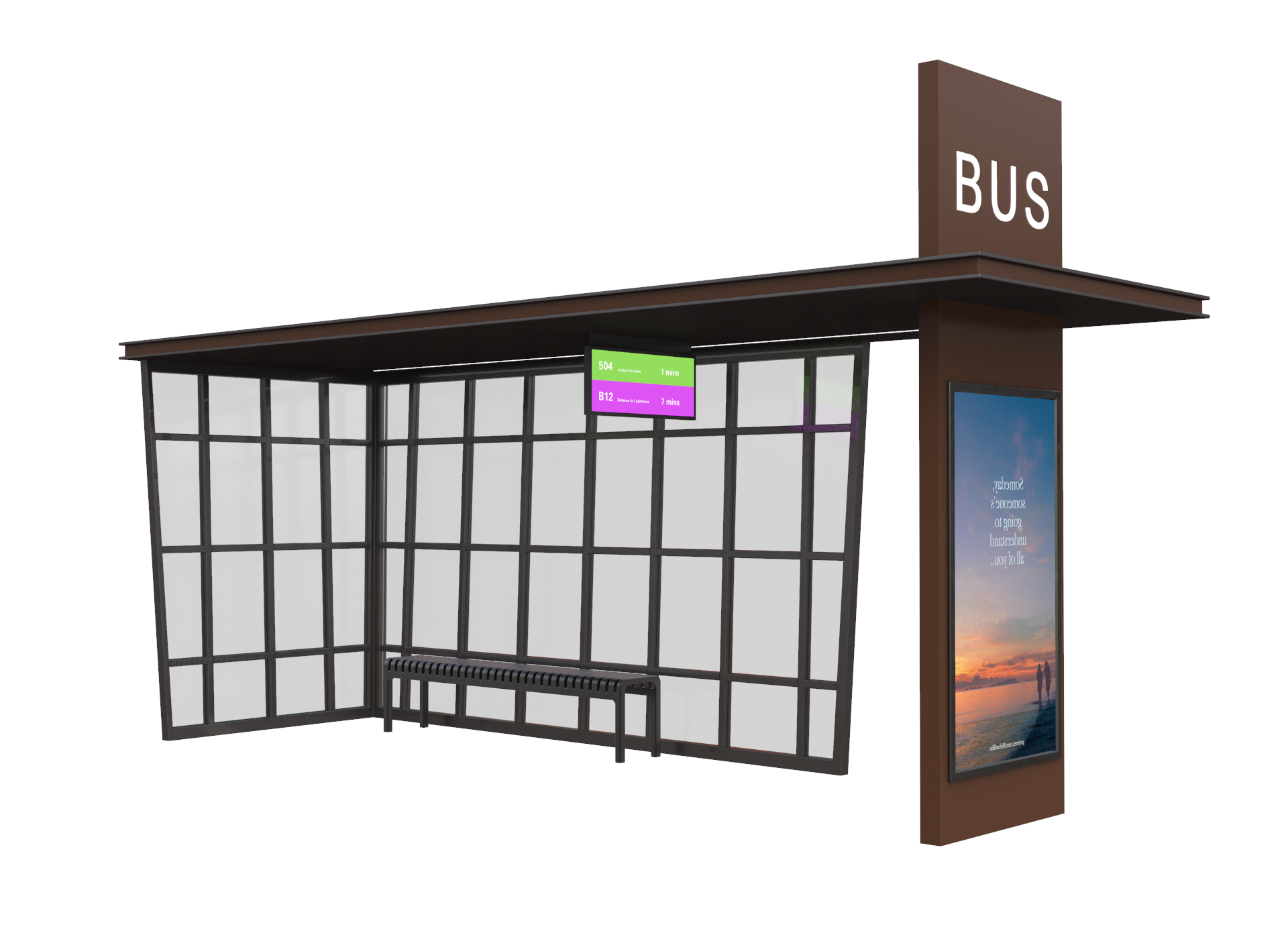The development level of urban public transport is closely related to the modernization of a city, and its architectural design level is the direct embodiment of urban taste. The design of bus stops should follow the principles of humanization, intellectualization, integrating practical functions and aesthetics, and become an important carrier of regional culture. The current modern urban bus stop design should combine the local history, culture and humanistic spirit, integrate these cultural elements into the modern urban construction, and make the environmental facility design reflect the local cultural heritage, local customs and humanistic characteristics, so as to form a tasteful, individual and characteristic design.
Today, for example, the degree of urban modernization is constantly improving. City City Bus City platform is like a city name card. It is a city's natural, humanistic culture concentrated essence, is a city specific, direct and realistic brand, is a city history, reality and future microcosm. Bus stop is an expression of "art". As an important urban facility closely related to people's life, it undertakes a large number of traffic transfer tasks every day. Therefore, the overall design of bus stops should be incorporated into the urban construction planning, so that the design can be more diversified, highlight the humanistic atmosphere and show the image of the city. Considering their material and spiritual functions, it is inevitable to improve their overall artistry, reflect the unique humanistic spirit and artistic connotation of the city, and promote the image of urban bus stops.

1、 Design elements of bus stop
Urban bus stop is an important window for the transmission of urban image information. It uses eye-catching graphics, personalized appearance, appropriate color combination and other design elements to optimize urban traffic, beautify urban environment, improve urban quality and display urban culture.
(1) Graphic representation
Graphics is a material medium with artistic vitality and artistic appeal. It is a sensitive visual center in visual communication. As a design element, graphic expression is more important in bus stop design. Design a diagram in line with the urban transportation line, so that passers-by can quickly and accurately find their own destination. Usually, each bus stop has a corresponding waiting time. Attach relevant pictures of urban development image or some public welfare graphics on the bus stop, so that passers-by can gain some civilized knowledge while waiting for the bus and remember the civilized waiting in mind.
(2) Personalized appearance
At present, the design of bus stops is enough to see the development of China's transportation industry. The appearance design of modern urban bus stops is quite humanized. The appearance is mainly rest type, mainly with canopy roof with shade, creating a platform integrating passers-by waiting and rest, and corresponding garbage storage points are set on both sides. In the design of bus stops, we strive to highlight the characteristics of the times and create a bus stop integrating fashion and functions. The appearance design is mainly rectangular, the baffle conforming to urban space is designed on the top, the design of seats is concentrated in the middle of the bus stop, and garbage storage points are set on both sides. In order to facilitate the occurrence of pedestrian boarding and alighting congestion, Front door and rear door signs are set on both sides of the bus stop, so as to facilitate passers-by to get on and off in turn through the front and rear doors. In addition, scientific and technological factors are also injected into the design of bus stops. High tech factors are integrated into the design of bus stops, and a bus information platform with buttons is designed, so that people can quickly know their waiting time and route. These high-tech factors are the symbol of the times. They must be used scientifically and reasonably in order to achieve results.
(3) Appropriate color
Different urban design concepts, choose different colors. The color of bus stops should be set off and integrated with the overall urban planning. Some cities tend to choose gray system and green system as the main color of platform design. The design of these colors is relatively simple and generous, which is suitable for people's visual comfort, so that passers-by can eliminate anxiety and anxiety when waiting for vehicles. Therefore, when choosing the color of bus stops, light gray white is the main color, which is not only fashionable but also atmospheric; The seats at the bus stop are also equipped with gray white to form the coordination and unity of color. Some cities choose the green system in order to add a touch of green to the road space and relieve the attention of pedestrians. The eye-catching red color stimulates people's visual senses, so that the eyes can quickly find the destination. These colors are matched according to needs, and the overall purpose is based on the principle of coordination and consistency.
Stainless steel shelters

2、 Principles of bus stop design under the background of the times
Due to the lack of reasonable planning and the limitations of objective conditions, there are some problems at bus stops in many cities, such as:
The disorderly distribution of bus stops makes it difficult for unfamiliar passengers to find the platform; With the rapid growth of the passenger flow of special groups in the city, there is no barrier free passage specially designed for the disabled at the bus station; The bus is quite crowded. The public facilities of a city should conform to the cultural characteristics of the city, because public facilities can not only be the carrier of function and aesthetics, but also become the transmission of urban culture. Therefore, the design of bus stops should adhere to the principle of identity and be consistent with urban planning and cultural taste.
(1) Principle of identity
Platform design is an important part of urban culture. We should use visual integrated design to personalize, clarify and order road information and cognition, unify the images in various forms of communication media, and create a unified urban road concept and visual image that can be stored and transmitted, so as to leave a strong impression and influence on the public. The application of the principle of identity can enable the public to have a complete understanding of the city image, will not produce obstacles in recognition due to the inconsistency of the identification elements of the city image, and enhance the communication power of the image. Various identification elements in bus stop design should be standardized from color, urban concept to visual elements, adopt the same standard design, and adopt the same mode for external transmission, so as to meet the purpose of urban image.
(2) Principle of difference
In order to obtain the recognition of the public, the design image of bus stop must be personalized, distinctive and unforgettable. Therefore, the principle of difference in design is very important. The bus stop should adopt the corresponding design language according to different urban publicity types. When using it, it should break the original rigidity and adopt different and original forms to highlight the design theme of the bus stop, so as to highlight the difference of urban space. The bus stop is designed to highlight the differences, so that it has different visual characteristics from other bus stop designs, which is conducive to identification, so as to highlight the style of urban space and stand out.
(3) Humanization principle
When designing bus stops in each city, they are designed for the purpose of humanization. These designs take humanization as the primary consideration in terms of color, appearance and internal potential, and constantly design bus stops that are more in line with human needs, so that passers-by can wait comfortably and happily, The highlight of these humanized designs is the expression of the power of design. Only with the principles of humanized design can we reflect the real significance of bus stop design.
(4) Regional principle
The personalized influence of regional culture on bus stops is mainly reflected through color and shape. Different countries or regions have different preferences for color due to different social and political conditions, customs, religious beliefs, culture and education and the influence of natural environment. As far as different regions of China are concerned, people's preferences for color are also different. As a very important product form, color has certain function and symbolic significance. Any artifact in the world is branded by society. In the modeling design process of bus stops, traditional culture, environment and other factors are also taken into account, so that personalized facilities in line with their own traditional characteristics can be designed.
Of course, according to the economic development level of different cities, the future development of bus stops should be planned for a long time, and some scientific and technological factors should be applied to enhance intelligence.








 Share to:
Share to: